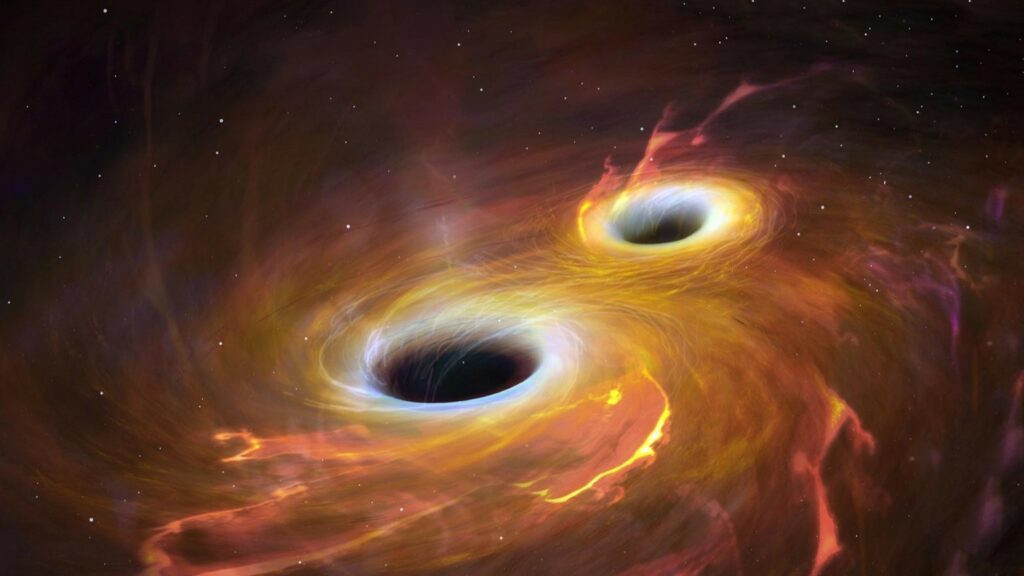Astronomers have spotted two active black holes merging at their farthest distance ever — just 900 million years after the Big Bang.
This is the first time that two luminous supermassive black holes have been spotted during cosmic dawn.
Cosmic dawn is the time encompassing the first billion years of the universe. During this period, roughly 400 million years after the Big Bang, the Epoch of Reionization began, in which light from nascent stars stripped hydrogen of their electrons, leading to a fundamental reshaping of galaxy structures.
“The existence of merging quasars in the Epoch of Reionization has been anticipated for a long time.” study lead author Yoshiki Matsuoka, an astronomer at Ehime University in Japan, said in a statement. “It has now been confirmed for the first time.”
The researchers published their findings April 5 in the The Astrophysical Journal Letters.
Black holes are born from the collapse of giant stars and grow by ceaselessly gorging on gas, dust, stars and other other black holes in the star-forming galaxies that contain them. If they grow large enough, friction causes the material spiraling into the black holes’ maws to heat up, and they transform into quasars — shedding their gaseous cocoons with blasts of light up to a trillion times more luminous than the brightest stars.
Related: ‘Physics itself disappears’: How theoretical physicist Thomas Hertog helped Stephen Hawking produce his final, most radical theory of everything
Get the world’s most fascinating discoveries delivered straight to your inbox.
Because light travels at a fixed speed through the vacuum of space, the deeper scientists look into the universe, the more remote light they intercept and the further back in time they see.
Past simulations of the cosmic dawn suggested that billowing clouds of cold gas may have coalesced into giant stars that were doomed to rapidly collapse, creating black holes. As the universe grew, those first black holes may have quickly merged with others to seed even bigger supermassive black holes throughout the cosmos.
Roughly 300 quasars have been previously found in the Epoch of Reionization, but these recently discovered quasars are the first to be discovered in a pair. The researchers found them using the Subaru Telescope’s Hyper Suprime-Cam, in which they appeared as two faint red smudges among a sparkling backdrop of galaxies and stars.
The astronomers then followed up with spectroscopic imaging and confirmed that the light source was a pair of spiraling quasars.
The researchers say their discovery will help them to understand how quasars’ powerful beams of light sculpted the structures of the universe we see today.
“The statistical properties of quasars in the Epoch of Reionization tell us many things, such as the progress and origin of the reionization, the formation of supermassive black holes during Cosmic Dawn, and the earliest evolution of the quasar host galaxies,” Matsuoka said.
>>> Read full article>>>
Copyright for syndicated content belongs to the linked Source : Live Science – https://www.livescience.com/space/black-holes/astronomers-discover-the-1st-ever-merging-galaxy-cores-at-cosmic-dawn
